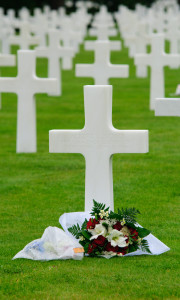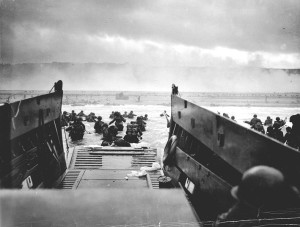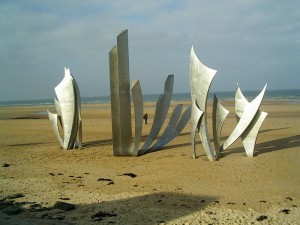70 Years of Remembrance
 This year marks the 70th anniversary of the largest seaborne invasion in history—June 6, 1944, D-Day. Planning for this massive assault started a year earlier. A strategic deception was put into place: Operation Bodyguard. The idea was to fool Germans into thinking that the invasion would occur at Calais, marking the shortest distance between England and France. Inflatable tanks, wooden hangars, and other diversions were put into place in southern England to deepen the illusion. Bombing raids ravaged the Atlantic Wall for months to soften the position and increase the chances for an Allied victory.
This year marks the 70th anniversary of the largest seaborne invasion in history—June 6, 1944, D-Day. Planning for this massive assault started a year earlier. A strategic deception was put into place: Operation Bodyguard. The idea was to fool Germans into thinking that the invasion would occur at Calais, marking the shortest distance between England and France. Inflatable tanks, wooden hangars, and other diversions were put into place in southern England to deepen the illusion. Bombing raids ravaged the Atlantic Wall for months to soften the position and increase the chances for an Allied victory.
Of the codenamed beaches attacked, Utah, Omaha and Pointe du Hoc were American invasions. Originally, the plan was to assault these beaches on the morning of June 5, but Dwight D. Eisenhower, Supreme Commander of the Allied forces in Europe, orders a twenty-four hour delay because of bad weather. At midnight on June 6, parachutists of the American 82nd, and 101st divisions drop between Sainte-Mère-Église and Carentan. Unfortunately, most of the soldiers in these divisions are scattered and their effectiveness greatly reduced.
The first beach landings occur at 6:30 a.m. at Utah beach. Using amphibious tanks and infantry, American soldiers storm the Nazi-controlled cliffs to surprise the Germans. They face flooded beaches, mines, and heavy machine gun fire in an attempt to gain a foothold in continental Europe. By noon, the troops at Utah have taken the position and are moving along the road to Pouppeville to link up with the parachutists under General Taylor.
On Omaha beach—the most heavily fortified position—things have gone awry. Rough waters and high tides flood most of the amphibious tanks, full crews inside. Landing crafts struggle to reach the beach. Soldiers wade through water 50 to 100 yards to gain footing in the sand. Enemy machine gun fire rips through the men resulting in 2,000 American casualties at Omaha alone.
At Pointe du Hoc, 200 U.S. Rangers climb the 30 meter cliffs to destroy German coastal guns. Reaching the top with ladders, ropes, and grappling hooks, the men discover that the guns had already been removed. They search the surrounding countryside. Finally, they find the coastal weapons unguarded 600 yards south of the point and disable them with thermite grenades. The Rangers then come under enemy fire; some are wounded and others captured, until only ninety men remain to fight. When they run out of ammo, they resort to firing seized German weapons. Reinforcements from the 116th Infantry Regiment arrive in time to claim victory.
This was a great day for the United States and her allies D-Day assured that Hitler’s regime would fall. The sacrifice made by the soldiers and the resources used to ensure that the assault would be successful harkens back to a time when the U.S. was willing to give its all to grant all mankind, under God, the opportunity for life and liberty.






